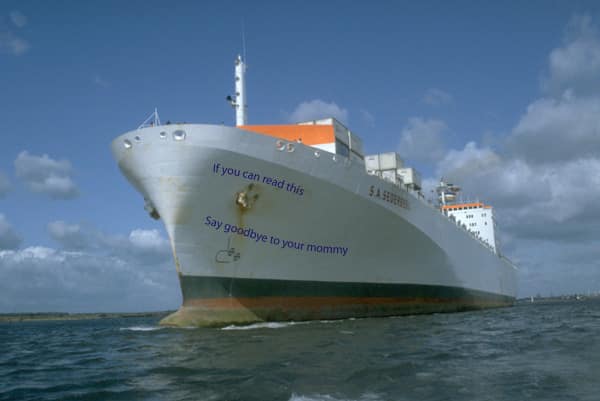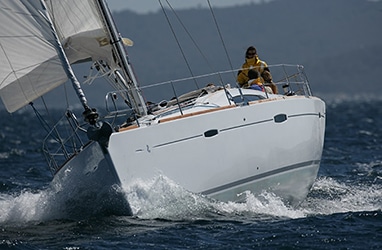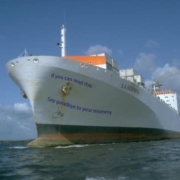Action to Avoid Collision

When you reach the section on who is responsible to give way to whom – in certain circumstances a large container ship must Give-Way to a sailboat. Hmmmm – let’s think about this one. If you saw this above now who should Give-Way? This rule is all about avoiding a collision and will clearly put you at fault if you fail to take action.
The Rule
- Any action shall [be taken in accordance with the Rules of this Part and], if the circumstances of the case admit, be positive, made in ample time and with due regard to the observance of good seamanship.
- Any alteration of course and/or speed to avoid collision shall, if the circumstances of the case admit, be large enough to be readily apparent to another vessel observing visually or by radar; a succession of small alterations of course and/or speed should be avoided.
- If there is sufficient sea room, alteration of course alone may be the most effective action to avoid a close-quarters situation provided that it is made in good time, is substantial, and does not result in another close-quarters situation.
- Action taken to avoid collision with another vessel shall be such as to result in passing at a safe distance. The effectiveness of the action shall be carefully checked until the other vessel is finally past and clear.
- If necessary to avoid collision or allow more time to assess the situation, a vessel may slacken her speed or take all way off by stopping or reversing her means of propulsion.
-
- A vessel which, by any of these rules, is required not to impede the passage or safe passage of another vessel shall, when required by the circumstances of the case, take early action to allow sufficient sea room for the safe passage of the other vessel.
- A vessel required not to impede the passage or safe passage of another vessel is not relieved of this obligation if approaching the other vessel so as to involve risk of collision and shall, when taking action, have full regard to the action which may be required by the rules of this part.
- A vessel, the passage of which is not to be impeded remains fully obliged to comply with the rules of this part when the two vessels are approaching one another so as to involve risk of collision.
Discussion
Parts (a) through (e) do not refer solely to the Give-Way vessel. It is talking about any action. In particular parts (c) and (d) should be of EXTREME NOTICE. They say you should avoid a close-quarters situation and pass at a safe distance. For example, if there is any doubt as to whether you could cut in front of another vessel and it might get a wee bit close, the rule says you can not.
AnecdoteOne time in my younger days I was out windsurfing. There was a large party barge crossing the path where all the windsurfers were cutting back and forth. To myself, I said “I am driven by wind. I have the right of way” and so I proceeded to cut in front believing I had enough room to make it and besides he had to get out of my way. As I crossed in front, he was so large that he stole my wind and I ended up in the drink RIGHT IN FRONT OF A PARTY BARGE with my harness still hooked in. That could have been the death of me because I was enforcing my rights. However, a quick look at 8(c) would have ended up with my relatives paying to clean the blood off the prop. I created a close-quarters situation. |
Rules 8(c) and (d) prevent you from getting close. Don’t get close. Anyways choose the safe route. BTW, this works really well on the roads as well. Avoid close-quarters situations in your vehicle AS WELL AS your vessel.
At this stage you might be getting what we are talking about BUT have some dilemma trying to balance Stand-On and choosing safe. The Rules are still clear on this – it talks about early action – the Stand-On vessel MAY take early action:
- communication – early and substantial course change,
- no close quarters situation – staying a safe distance apart,
- acting according to full knowledge, not scanty knowledge,
- good seamanship






